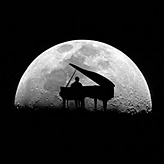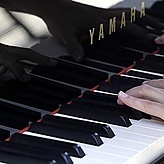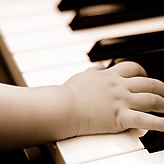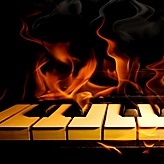
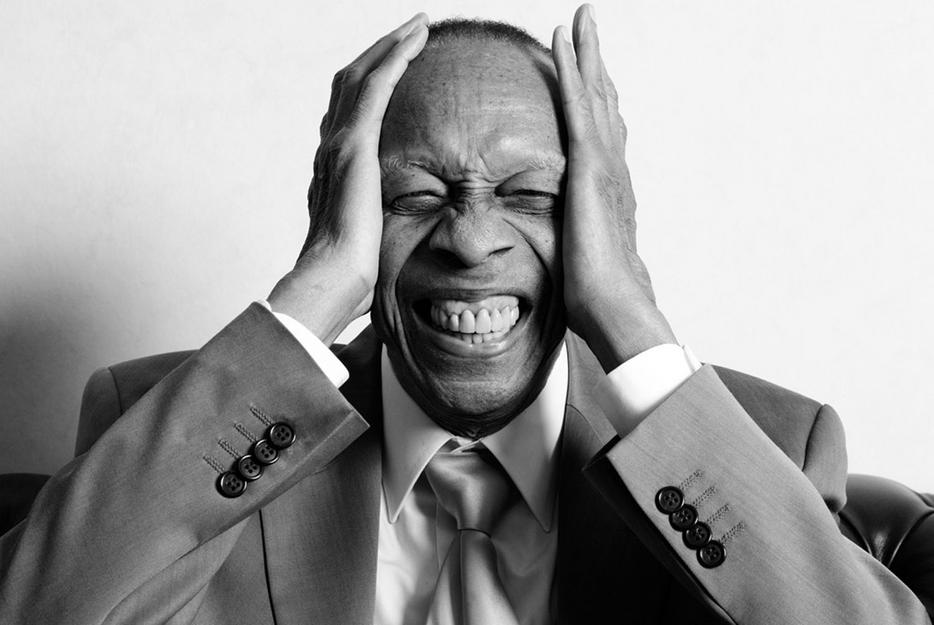
El piano es un instrumento musical bastante popular de la familia de los cordófonos, más concretamente en la categoría de cuerda percutida. Se llama pianista al músico que toca el piano. Piano es una expresión proveniente del italiano que significa suave, en la música se utiliza para indicar la intensidad con la que se debe tocar.
The piano is a very popular musical instrument of the family of stringed instruments,
specifically in the category of percussive string. It's called the musician pianist who plays the piano.
Piano is an Italian expression that means coming from the soft, music is used to indicate the intensity
with which to play.
Its invention is attributed to Bartolomeo Cristofori was an Italian musical instrument maker to the early
eighteenth century, working for Prince Ferdinand II de Medici as conservative instruments.
It was created by referencing earlier instruments such as zither, dulcimer, the monochord, the clavichord and
the harpsichord. The great innovation of piano was the ability to play with different shades of intensity which
was not possible with their predecessors.
Different types of piano, the main one is the grand piano in this type strings and soundboard are positioned
horizontally, vertically or wall piano also quite common as the name suggests is the sounding board in
a vertical arrangement and there are different types depending on their size and the spinet, the console,
the former study and finally the electronic piano or keyboard, in such sound is produced electronically and
can also play various other sounds and rhythms.
Keyboard:
Pianos often have a keyboard consisting of 88 keys, 52 white and 36 black, have a record of seven octaves
and a minor third. Formerly the keys were more scarce 85 and earlier instruments as the harpsichord was
around 61, up to five octaves. There are up to 97 piano keys. The keys have a certain weight on the inside
that you notice when playing.
Sounding board:
The soundboard is a closed space of the piano whose function is to amplify the sound. Is a relevant factor
in relation to the timbre, quality matters with which it is made and the wood used.
The box comprises a bottom cover call soundboard, as the name suggests is a table beneath the strings
that is the real part of resonance and amplifies the sound created by the strings, then it travels up the top
cover and this directs it to the public, the more power is needed is more open.
Chassis:
Is a group of small iron rods generally, cordal has a called party to which the ropes are adjusted,
which in turn are wound in the socket formed by the pins, with these strings are tuned bass tones
or getting more acute.
Strings:
The strings are the element that remains powered and produce sound by vibrating. There are 224,
the longest are called drones and sounds originate most serious of all, in these there is only one
string per key made of steel with a 1% carbon and a bit of copper to add weight to the low register
there are two strings that are played in unison and the sharp three. The treble strings are made of steel only.
The bass strings are longer and thicker and the sharp contrast narrower and shorter.
The strings are created through a process of drawing.
Pedals:
The pianos have three pedals today: unicordio, tone and resonance (from left to right) but there used
pianos that had up to five pedals and early twentieth century had only the resonance.
The unicordio hammers move sideways for golpen only two of the three strings, the tone also call
lasts longer held the same resonant note and makes the following note to sound without the follow
key pressed.
In upright pianos the middle pedal is called mute and what it does is to bring a cloth between hammers
and strings rather reducing the volume.
Hammer mechanism:
Piano performance is that when the key is pressed through a system of levers that move the hammer
strikes the string, it vibrates and produces sound and listen.
Featured pianists
Frederic Chopin:
Polish-born pianist who lived in Paris is considered one of the most influential composers and leading
exponent of romanticism, virtuoso pianist and dedicated almost exclusively to this instrument.
Ludwig van Beethoven:
German pianist who developed his life in Vienna (capital of music by then) was an important composer and
conductor, his music is considered the transition from classicism to romanticism.
Wolfgang Amadeus Mozart:
Austrian pianist started as a child lived in Vienna before Beethoven was a major composer considered
one of the most prominent musicians of the great figure of history and classicism.
"Music is the heart of life. As she talks love, without it there is quite possible and with it everything is
beautiful "
Franz Liszt, pianist.
Son invention est attribuée à Bartolomeo Cristofori était un luthier italien musical début du XVIIIe siècle, qui travaille pour le prince Ferdinand II de Médicis comme des instruments de conservateurs.
Il a été créé en référençant instruments antérieurs tels que la cithare, dulcimer, le monocorde, le clavicorde et le clavecin. La grande innovation de piano était la possibilité de jouer avec des nuances différentes d'intensité qui n'était pas possible avec leurs prédécesseurs.
Différents types de piano, dont le principal est le piano à queue dans ce type de chaînes et table d'harmonie sont positionnés horizontalement, verticalement ou un mur aussi le piano tout à fait commun que leur nom l'indique est la caisse de résonance dans une disposition verticale et il existe différents types en fonction de leur taille et de l'épinette, la console, la première étude, et enfin le piano électronique ou un clavier, dans son est produit électroniquement et peut également jouer de divers autres sons et les rythmes.
Clavier:
Pianos ont souvent constitué d'un clavier de 88 touches, 52 blancs et 36 noirs, ont un dossier de sept octaves et une tierce mineure. Autrefois les touches étaient plus rares 85 et les instruments antérieurs comme le clavecin était d'environ 61, jusqu'à cinq octaves. Il ya jusqu'à 97 touches de piano. Les touches ont un certain poids à l'intérieur que vous remarquerez lorsque vous jouez.
Sounding board:
La table d'harmonie est un espace fermé du piano dont la fonction est d'amplifier le son. Est-ce un facteur pertinent en ce qui concerne le timbre, les questions de qualité avec laquelle elle est faite et le bois utilisé.
La boîte comprend une table d'harmonie appel de fond de couverture, comme son nom l'indique est une table sous les chaînes qui est la partie réelle de la résonance et amplifie le son créé par les cordes, puis il se déplace le capot supérieur et cela, il dirige au public, plus la puissance est nécessaire, c'est plus ouvert.
Châssis:
Est un groupe de barres de fer de petite taille généralement, cordale a une partie appelée à laquelle les cordes sont ajustés, qui à son tour sont enroulées dans la douille formée par les repères, avec ces cordes sont accordées tonalités basses ou de plus aiguë.
Cordes:
Les chaînes sont l'élément qui reste sous tension et produisent un son en faisant vibrer. Il ya 224, la plus longue sont appelés drones et les sons proviennent le plus grave de tous, dans ces derniers il ya une seule chaîne par clé en acier avec un atome de carbone de 1% et un peu de cuivre pour ajouter du poids au registre bas il ya deux chaînes qui sont joués à l'unisson et les trois pointu. Les cordes aiguës sont faites d'acier seulement. Les cordes basses sont plus longs et plus épais et le contraste étroit et plus court. Les chaînes sont créées par un processus de dessin.
Pédales:
Les pianos ont trois pédales aujourd'hui: unicordio, le ton et la résonance (de gauche à droite), mais il y avait des pianos qui ont eu jusqu'à cinq pédales et début du XXe siècle n'avait que la résonance.
Les marteaux unicordio se déplacer latéralement pour golpen seulement deux des trois chaînes, le ton aussi appel dure plus lieu la même note de résonance et fait la remarque suivante à sonner sans la clé suivi pressé.
Dans les pianos droits de la pédale du milieu est appelé muet et ce qu'il fait est de mettre un chiffon entre les marteaux et les cordes plutôt de réduire le volume.
Mécanisme de marteau:
Performances Piano, c'est que lorsque la touche est pressée à travers un système de leviers qui se déplacent le marteau frappe la corde, elle vibre et produit des sons et écouter.
Pianistes en vedette
Frédéric Chopin:
D'origine polonaise pianiste qui a vécu à Paris est considéré comme l'un des compositeurs les plus influents
Ludwig van Beethoven:
Pianiste allemand qui a développé sa vie à Vienne (capitale de la musique d'ici là) était un important compositeur et chef d'orchestre, sa musique est considérée comme la transition entre le classicisme au romantisme.
Wolfgang Amadeus Mozart:
Le pianiste autrichien a commencé comme un enfant a vécu à Vienne, avant Beethoven était un grand compositeur considéré comme l'un des musiciens les plus éminents de la grande figure de l'histoire et le classicisme.
«La musique est au cœur de la vie. Comme elle parle l'amour, sans elle, il est tout à fait possible et avec elle tout est beau "
Franz Liszt, pianiste.
The piano is a musical instrument quite popular family of string instruments, more specifically in the category of percussive string. Called pianist the musician who plays the piano. Piano is an Italian expression meaning from the soft, music is used to indicate the intensity with which it should be played.
Its invention is attributed to Bartolomeo Cristofori was a Italian musical instrument maker to the early eighteenth century, working for Prince Ferdinand II de Medici as conservative instruments.
It was created by referencing previous instruments such as the sitar, the dulcimer, the monochord, the clavichord and the harpsichord. The great innovation of the piano was the ability to play with different shades of intensity which was not possible with their predecessors.
There are different types of piano, the principal is the piano, in this type strings and soundboard are positioned horizontally, vertically or wall piano also quite common as the name suggests has the soundboard in vertical and There are different types according to their size and the spinet, the console, and the former study, finally the electronic piano or keyboard, in such sound is produced electronically and can also play various other sounds and rhythms.
Keyboard:
The pianos often have a keyboard consisting of 88 keys, 52 white and 36 black, have a record of seven octaves and a minor third. Formerly the keys were more scarce 85 and earlier instruments such as the harpsichord was around 61, up to five octaves. There are up to 97 keys piano. The keys have a certain weight inside you notice when playing.
Soundboard:
The soundboard is a closed piano whose function is to amplify the sound. It is a relevant factor in relation to the ring, it is important to the quality with which it is made and the wood used.
The box consists of a bottom call soundboard, as the name suggests is a table beneath the strings that is the real part of resonance and amplifies the sound created by the strings, then it travels up the top cover and this directs it to the public, the more power is needed more open.
Frame:
A set of small iron rods generally, has a tailpiece to the called party that the ropes are adjusted which in turn are wound on the socket formed by the pins, with these strings are tuned bass tones or getting sharper.
Strings:
The cords are the element that remains in tension and produce sound by vibrating. There are 224, the longest are called drones and sounds originate most serious of all, these are one string per key formed steel with 1% carbon and some copper to add weight to the low register two strings being played in unison and the sharp three. The treble strings are made of steel only. The bass strings are longer and thicker and conversely the narrower acute and shorter length. The strings are created through a drawing process.
Pedals:
Current pianos have three pedals: unicordio, tonal and resonant (left to right) although there used pianos that had five pedals and early twentieth century had only the resonance.
The unicordio hammers move sideways to golpen only two of the three strings, also called sharp tonal longer maintains the same note and resonance makes the note continues to sound without the key remains pressed.
In upright pianos middle pedal is called the damper and what it does is to bring a cloth between hammers and strings rather reducing the volume.
Hammer mechanism:
The piano performance is that when the key is pressed through a system of levers that move the hammer strikes the string, it vibrates and produces sound and listen.
Featured Pianists
Frédéric Chopin:
Pianist of Polish origin who lived in Paris is considered one of the most influential composers and exponent of romanticism, virtuoso pianist and devoted almost exclusively to this instrument.
Ludwig van Beethoven:
German pianist who developed his life in Vienna (Capital of music at the time) was an important composer and conductor, his music is considered the transition from classicism to romanticism.
Wolfgang Amadeus Mozart:
Austrian pianist started as a child lived in Vienna before Beethoven, was an important composer considered one of the most prominent musicians in history and great figure of classicism.
"The Músicaes the heart of life. As she talks love, without it there is quite possible and with it everything is beautiful "
Franz Liszt pianist.
Le piano est un instrument de musique très populaire famille des instruments à cordes, plus particulièrement dans la catégorie des cordes percussion. Appelé le musicien pianiste qui joue du piano. Piano est un sens de l'expression italienne douce, la musique est utilisée pour indiquer l'intensité avec laquelle il devrait être joué.
Son invention est attribuée à Bartolomeo Cristofori était un luthier italien musicale au début du XVIIIe siècle, qui travaille pour le prince Ferdinand II de Médicis comme des instruments conservateurs.
Il a été créé en référençant les instruments antérieurs tels que le sitar, le dulcimer, le monocorde, le clavicorde et le clavecin. La grande nouveauté du piano était la possibilité de jouer avec différentes nuances d'intensité qui n'était pas possible avec leurs prédécesseurs.
Il existe différents types de piano, le principal est le piano, dans ce type de cordes et la table d'harmonie sont positionnés horizontalement, verticalement ou au mur aussi le piano tout à fait commun que le nom suggère est la table d'harmonie en vertical et Il existe différents types en fonction de leur taille et de l'épinette, la console, et la première étude, enfin, le piano électronique ou un clavier, un son est produit une forme électronique et peuvent également jouer divers autres sons et des rythmes.
Clavier:
Les pianos ont souvent un clavier composé de 88 touches, dont 52 blancs et 36 noirs, ont un dossier de sept octaves et une tierce mineure. Autrefois, les touches sont plus rares 85 et antérieures des instruments tels que le clavecin était d'environ 61 ans, jusqu'à cinq octaves. Il ya jusqu'à 97 touches piano. Les touches ont un certain poids à l'intérieur vous remarquez lors de la lecture.
Soundboard:
La table d'harmonie est un piano fermé dont la fonction est d'amplifier le son. Il s'agit d'un facteur pertinent par rapport à l'anneau, il est important de la qualité avec laquelle elle est faite et le bois utilisé.
La boîte se compose d'une table d'harmonie appel bas, comme son nom l'indique est une table sous les chaînes qui est la partie réelle de résonance et amplifie le son créé par les cordes, puis il se déplace le capot supérieur et cela le dirige vers le public, plus de puissance est nécessaire plus ouvert.
Cadre:
Un ensemble de barres de fer de petite taille généralement, présente une pièce de raccordement à la partie appelée que les cordes sont ajustées qui sont à leur tour enroulé sur la douille formée par les repères, avec ces cordes sont accordées sons graves ou s'affine.
Cordes:
Les cordes sont l'élément qui reste en tension et produisent un son par vibration. Il ya 224, la plus longue sont appelés drones et les sons proviennent le plus grave de tout, ce sont une chaîne d'acier formé par clé avec 1% de carbone et un peu de cuivre pour ajouter du poids au registre bas deux cordes jouées à l'unisson et de la forte trois. Les aigus sont en acier seulement. Les cordes basses sont plus longs et plus épais et inversement la longueur étroit aigu et plus courtes. Les chaînes sont créées par un procédé d'étirage.
Pédales:
Pianos actuels ont trois pédales: unicordio, tonale et sonore (de gauche à droite), mais il y avait des pianos qui avaient cinq pédales et au début du XXe siècle n'avaient que la résonance.
Les marteaux unicordio déplacer latéralement pour golpen seulement deux des trois cordes, appelé aussi affûtées plus longtemps tonale maintient la même note et la résonance rend la note continue à sonner sans la clé reste enfoncé.
Dans les pianos droits milieu pédale est appelé le registre et ce qu'il fait est de mettre un tissu entre les marteaux et les cordes au lieu de réduire le volume.
Mécanisme de frappe:
Le piano, c'est que lorsque la touche est pressée à travers un système de leviers qui se déplacent le marteau frappe la corde, elle vibre et produit des sons et écouter.
Pianistes en vedette
Frédéric Chopin:
Le pianiste d'origine polonaise qui vit à Paris est considéré comme l'un des compositeurs les plus influents et les exposants du romantisme, le pianiste virtuose et presque exclusivement consacré à cet instrument.
Ludwig van Beethoven:
Pianiste allemand qui a développé sa vie à Vienne (capitale de la musique à l'époque) était un compositeur et chef d'orchestre importante, sa musique est considérée comme la transition du classicisme au romantisme.
Wolfgang Amadeus Mozart:
Pianiste autrichien a commencé comme un enfant a vécu à Vienne avant Beethoven, était un compositeur important considéré comme l'un des musiciens les plus importants de l'histoire et grande figure du classicisme.
"Le Músicaes cœur de la vie. Comme elle parle amour, sans elle, il est tout à fait possible, et avec elle tout est beau "
Franz Liszt pianiste.

